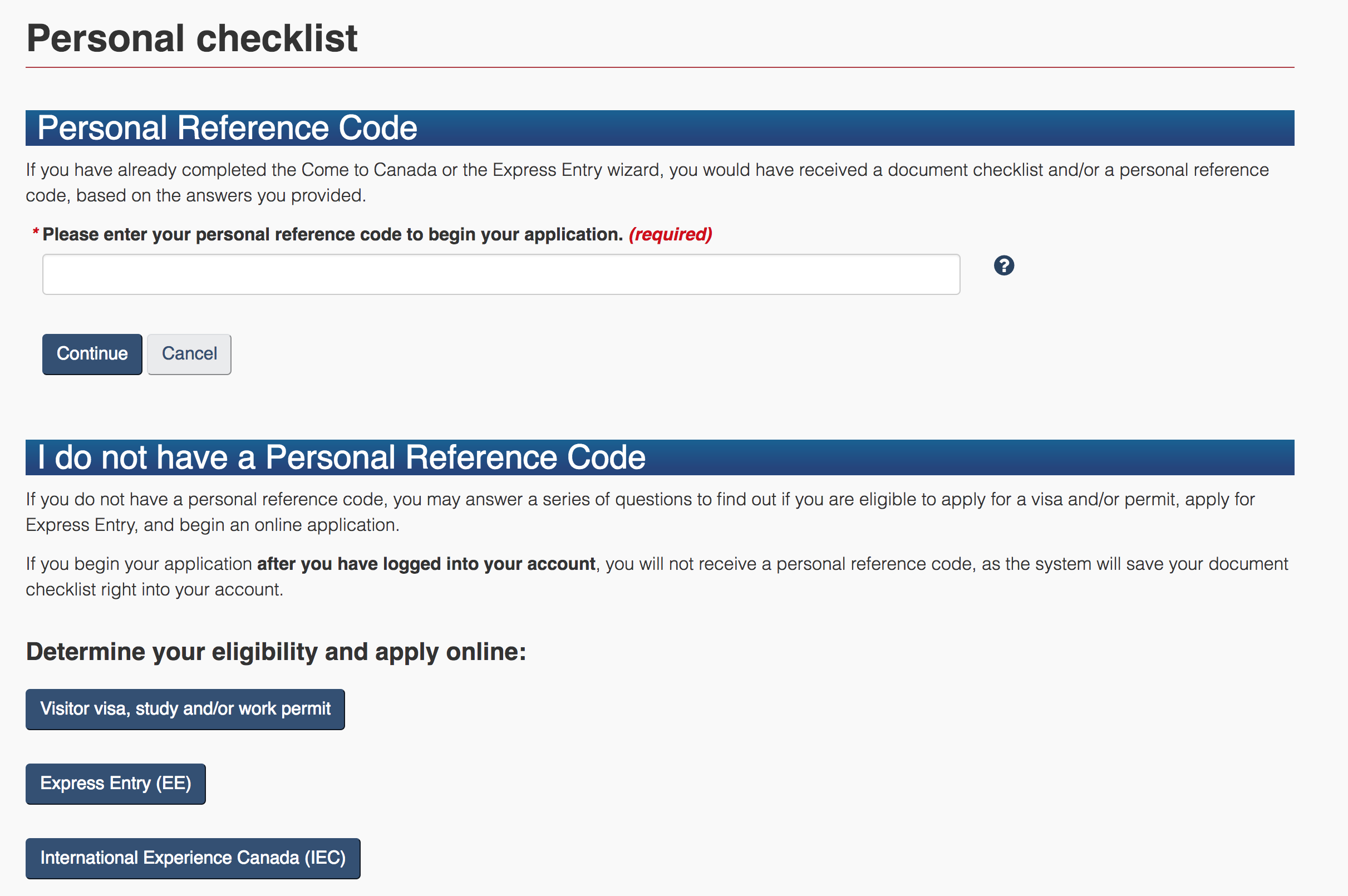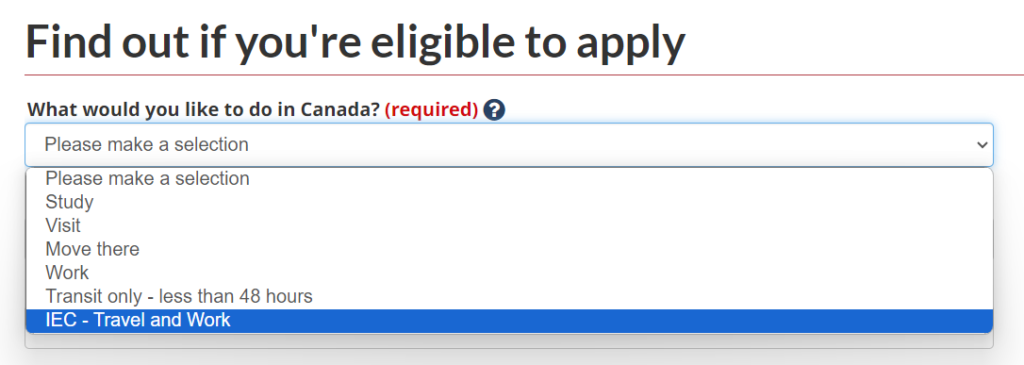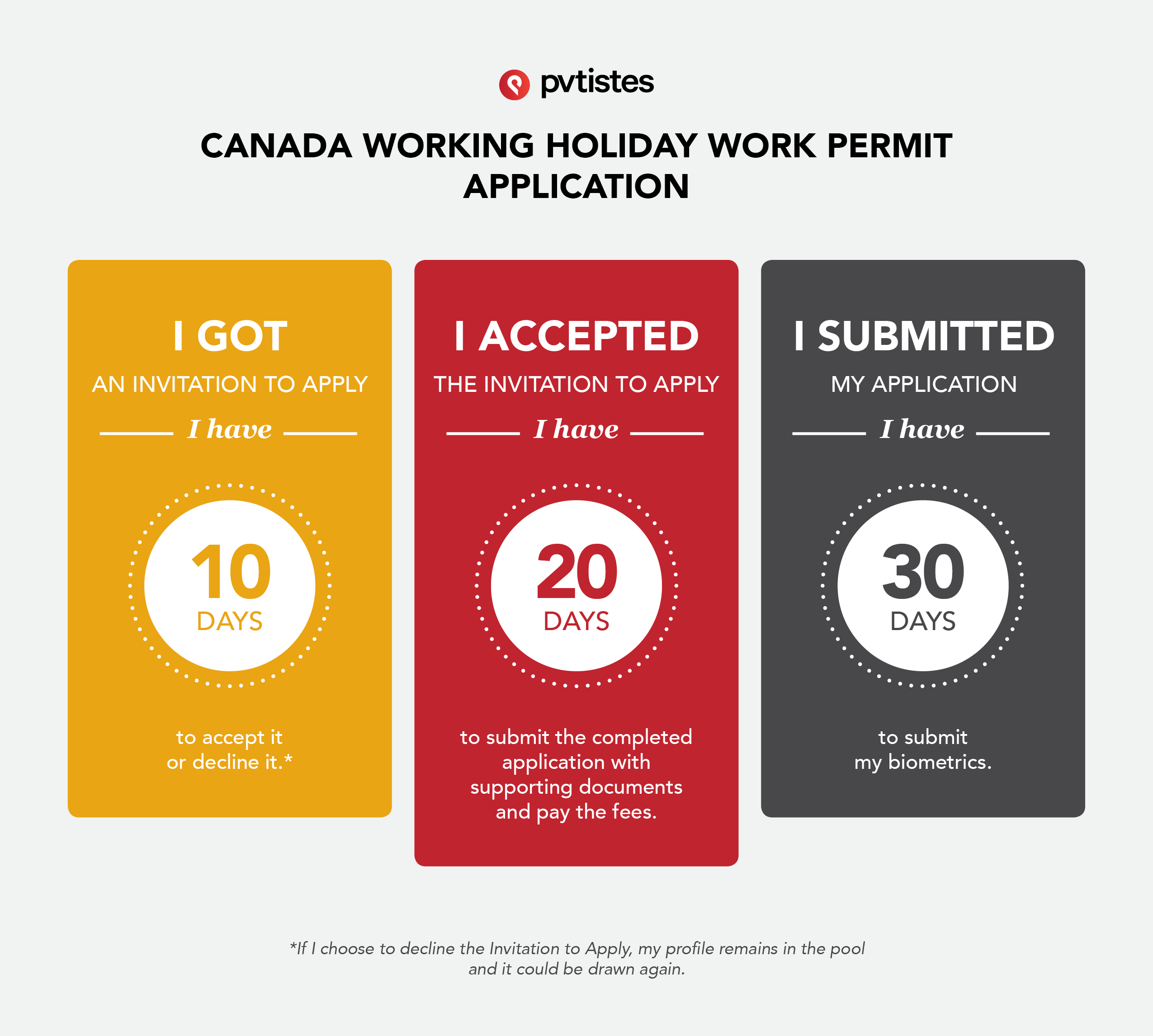What are the main reasons for your International Experience Canada (IEC) application being refused?
Over past IEC seasons, we have identified some of the main reasons for refusal. Your feedback allows us to identify these different reasons for refusal, so please leave us a comment below if this has happened to you.
This feedback is also intended to warn candidates against any errors that are made repeatedly, to prevent a refusal from happening to them. For more information, check out the top 10 common mistakes to avoid in your IEC application.
IEC applications are usually refused because of:
- Ineligibility for an IEC work permit in Canada
- Procedural errors
- Missing or non-compliant documents
- Problems with biometrics.
1. Refusal due to ineligibility for an IEC permit in Canada
The basic criteria (age, nationality, country of residence, etc.)
As a reminder, you can find the eligibility criteria for the various IEC programs (Working Holiday, Young Professionals, International Co-op) on the Government of Canada website.
You must select your nationality to find out the participation criteria, as the requirements vary from one nationality to another. You are responsible for checking your eligibility before applying.
Examples:
- The age range for Dutch citizens is 18-30 years old, whereas British citizens can be 18-35 years old.
- A Dutch citizen must be able to prove they have permanent residence (postal address) in the Netherlands, whereas a British citizen does not have any residency requirements and can reside outside of the UK when applying.
Note that you must have citizenship for one of the countries with an IEC agreement to be eligible. Residing in a partner country of Canada without being a citizen does not allow you to be eligible.
Example: if you live in France but have English citizenship (even if you have lived in France for years), you cannot submit an application as a French citizen; you must apply to the British pool(s).
The limit on number of participations
You are limited in the number of times you can participate through IEC. You can find these limits (depending on your nationality) on the Government of Canada website.
Some citizenships allow multiple participations or a participation in each category (Working Holiday, Young Professionals, International Co-op). Other citizenships may only allow one IEC participation in total, or citizens may only be able to choose from one or two categories (rather than all three).
Exceptions:
- If you have dual citizenship, you may be able to apply and participate under each citizenship, if they both have an IEC agreement with Canada. For example, a dual British and Irish citizen could do one Working Holiday under their Irish passport and then apply for two more Working Holiday participations using their British passport.
- Some citizenships can have another round of participation if the first participation occurred before a certain date. For example, an Irish citizen who participated in IEC before 2013 would now be eligible for a second participation of up to 24 months.
- If you have participated the maximum number of times allowed for your citizenship, you may be able to apply again by using a Recognised Organisation (RO). For more information, see here.
Refusals for criminality
You may be considered inadmissible to Canada due to your criminal record.
This includes being arrested or charged for drunk driving, driving under the influence of cannabis or any other drug driving, in any country.
If this applies to you, it is best to research the rehabilitation procedure provided by Canada, which might allow you to apply with a criminal record.
To find out more: About inadmissibility.
2. Refusal due to procedural errors
Applying outside of the official website
There is only one official way of applying for an IEC permit. You will submit your name to the pool(s) on the Immigration, Refugees and Citizenship Canada (IRCC) website. You will wait to see if you are lucky and receive an Invitation to Apply (ITA). If you do, you have 10 days to decide whether to accept or decline the ITA. If you accept the ITA, you then have 20 days to complete and submit the online application form.
If you find yourself submitting an application for an IEC permit without following these steps or without receiving an ITA, you have certainly taken the wrong steps (or worse, you’ve been scammed!) and you risk having your application refused.
For further help, you can consult our step-by-step guide to the IEC application process.
Choosing the wrong category
If you submit an application directly from your IRCC account, you MUST select “International Experience Canada (IEC)” when asked:

If applying with the Come to Canada tool, you MUST select “IEC—Travel and Work” when asked, “What would you like to do in Canada?” (even if you also want to study, visit or work when there!)

If you select one of the other options, either with the Come to Canada tool or directly on the IRCC page, you will not be able to apply for the IEC categories (Working Holiday, Young Professionals, International Co-op).
For more information, follow our step-by-step guide.
Failure to respect deadlines set by the authorities
Once you have been sent your ITA, you must meet specific deadlines at each stage of the procedure.

You may receive a refusal if you fail to meet these deadlines. This also goes for providing additional documents.
To avoid rejection for this reason, we recommend that you regularly check your account and your spam folder in your emails. If the authorities request extra information or additional documents, you will receive a message with instructions in your online account. These messages also often end up in your spam emails.
We recommend that you never wait until the deadline to complete your form or to submit documents. In the event of a technical or maintenance problem on the website, you may find yourself unable to submit on time.
Finally, remember to take time zones into account, as your deadlines will be in Universal Coordinated Time (UTC).
3. Refusal because of missing or non-compliant documents
Illegible documents
You could obtain a refusal if the documents you provide are not completely readable (blurred photo, scanner problem which partially covers or distorts an image, etc.).
If your documents are not in English or French (the languages officially used in Canada), you must provide an English translation by a certified translator along with the original documents for them to be accepted.
Providing the wrong document
Before uploading each document, make sure it is the correct file.
Make sure that each document meets the instructions provided by the Canadian authorities (in the small circle with a question mark when you need to upload your documents).
Non-compliant forms (or expired forms)
When you apply, you are asked to provide certain forms.
You may have difficulty opening certain PDF documents that you can download from the official website. It is never recommended to find and download these documents from other sites, as the links to the forms might be outdated or incorrect.
If you have problems downloading documents from the official website, we recommend these two links:
- FAQ from Canadian authorities: I cannot open my application form in PDF format. What can I do?
- On our site: How to open Immigration, Refugees and Citizenship Canada PDF forms
Additional documents not submitted
Once your application is submitted, do not presume you are done, as you may still be asked to provide additional documents.
This is particularly the case for:
- Police certificates from countries where you have lived in the past.
- IMM 5257 form asking for details of your whereabouts (often requested if you have left gaps in your work and education history or on your resume!).
Unfortunately, some applicants simply upload their documents and do not press “Next” to sign and submit the application again. Once the deadline for submitting documents has passed, they receive a message telling them the application has been refused because they have not submitted the missing documents.
For more information, see IRCC asked me for a new document. How can I submit it?
Submitting multiple documents
When you upload a document (for example, a copy of your passport), all the pages you need to provide must be combined into a single PDF document. If you upload multiple files to a single location, each new file will overwrite the previous one.
Examples:
- You must provide a scan of the identification pages of your passport and any pages on which stamps or visas are located.
- You must provide several police certificates because you have lived in multiple countries for more than six months at a time.
Follow our advice here for merging multiple documents into a single PDF.
4. Refusal due to problems with biometrics
Candidates who think they are not affected by biometrics
If you have not provided your biometric data to Canadian authorities in the last 10 years, you will need to provide biometrics after submitting your IEC application and paying the biometrics fee.
You normally receive an invitation to book your biometrics appointment within 24-48 hours of submitting your application form. It is not possible to visit a visa application centre (VAC) to give biometrics without this biometrics invitation letter (BIL).
However, many candidates wrongly think that because they have provided fingerprints and had their photo taken at the border when entering (e.g. as a tourist), they do not need to give biometrics again for their IEC application.
This is not the case!
The Canadian authorities collect biometric data for all candidates submitting an application for a work permit, study permit, temporary resident visa or permanent resident visa. These will be compared to any biometrics previously associated with your passport from travel into Canada, but are not considered a replacement.
In short, candidates mistakenly indicate on the online form that they have already provided their biometric data when they have not actually been to a VAC. This incorrect answer will lead to candidates not being asked to pay the biometrics fee and not being sent a BIL.
What happens if I have made this mistake?
When the authorities check for the existence of previous collection of biometric data, they will send candidates who have incorrectly answered this question a message on their account. Candidates will be encouraged to pay the biometrics fee and to submit proof of payment to continue with the application process.
Providing proof of payment of the biometrics fee makes it possible to link the payment to the request.
What are the consequences?
- Those who did not see that they had received further instructions missed the deadline for paying the fees and, as they had not satisfied the biometrics requirement, were refused.
- Some applicants uploaded proof of payment but forgot to submit their application by signing it (remember to always submit, and not just upload, extra documents!).
- Processing times were extended, as it could sometimes take several days to connect payment to the original application. Applications aren’t processed until applicants have been to a VAC and given biometrics, so you could be further delayed in getting a response (approval or refusal).
To avoid this problem arising, remember to read the question on biometrics carefully:
- If you have never provided your biometric data to Canadian authorities at a VAC, simply answer NO.
- If you think you have already provided your biometric data to Canadian authorities, check if this is really the case by following this link. You have normally provided your biometrics if you applied for a study permit, work permit or permanent residence application AFTER July 31, 2018.
Is it possible to contest a refusal?
If the error is primarily yours, it is unlikely that any further decision will be made regarding your application.
However, if you think that your refusal is the result of an error on the part of the authorities (this can happen), you can try to challenge the decision. Take the time beforehand to identify the problem, gather your evidence and make sure you are within your rights to complain.
You can use the web form to get in touch with IRCC.
If you received a final refusal after submitting your IEC application, you will be able to join the pools again and (if you receive another ITA) submit a new application. You can only do this if your refusal is not linked to a problem that makes you ineligible for the IEC program.
If you are selected again (or if you begin other immigration procedures with the Government of Canada), do not forget to mention your refusal when asked about previous refusals in the application form.
Is my request refunded if refused?
Your IEC participation fee and open work permit fee will be refunded if the refusal of your application is not related to a misrepresentation on your part.
However, biometric fees (if you have provided your biometric data) will not be reimbursed. But that’s okay, as your biometric data is valid for 10 years, so you can use them again in future applications.
Find out more: Reimbursement for IEC applications.
















 Français
Français English
English




0 comments
{{like.username}}
Loading...
Load more